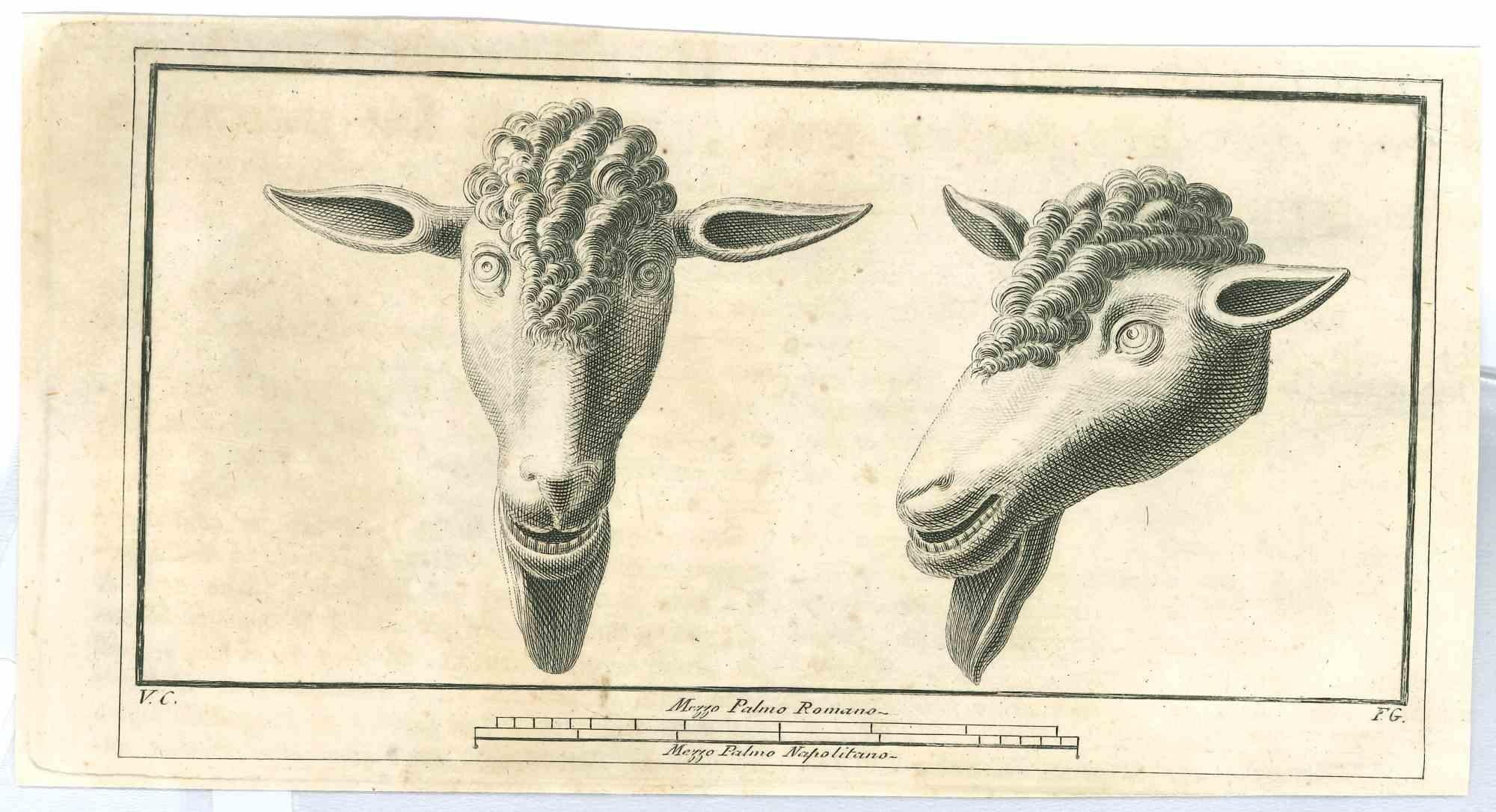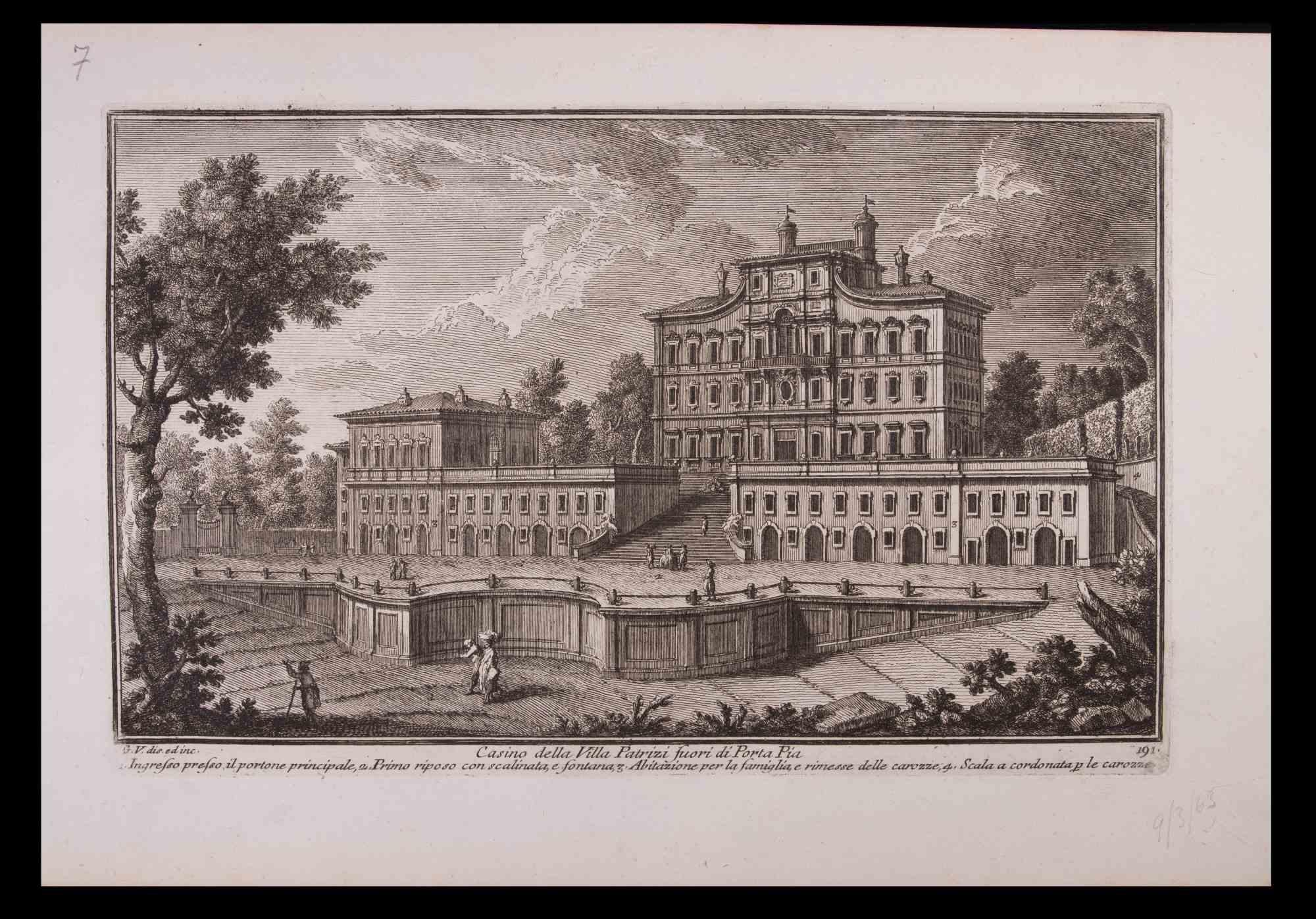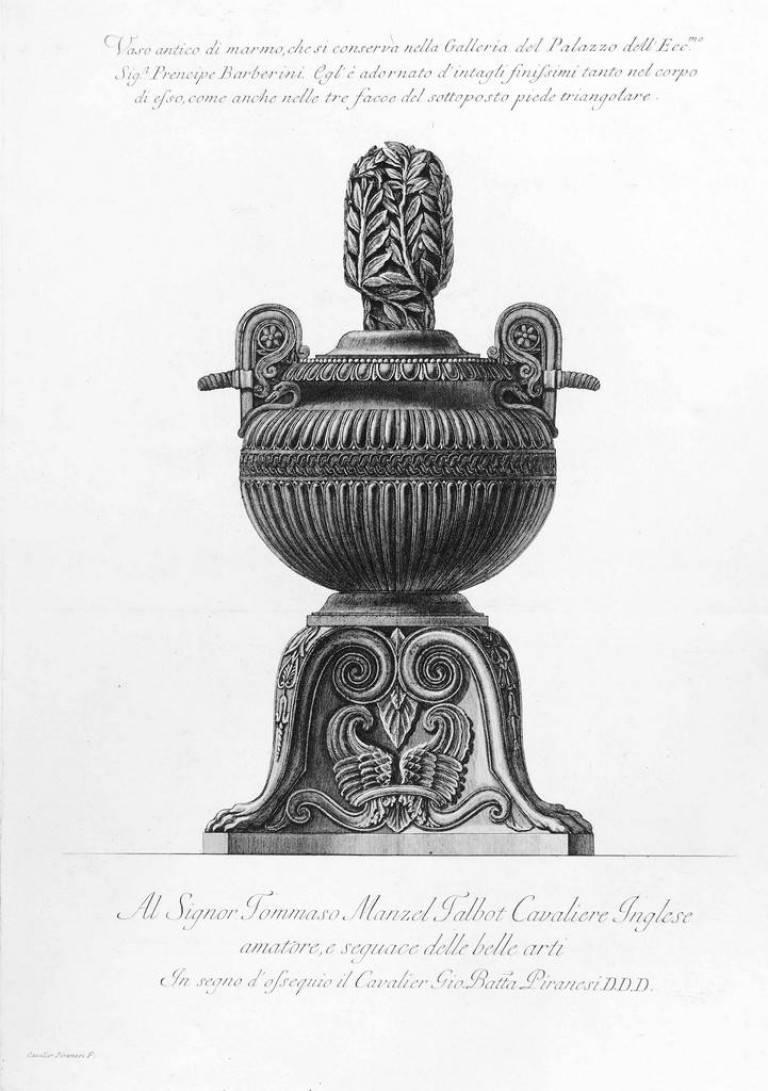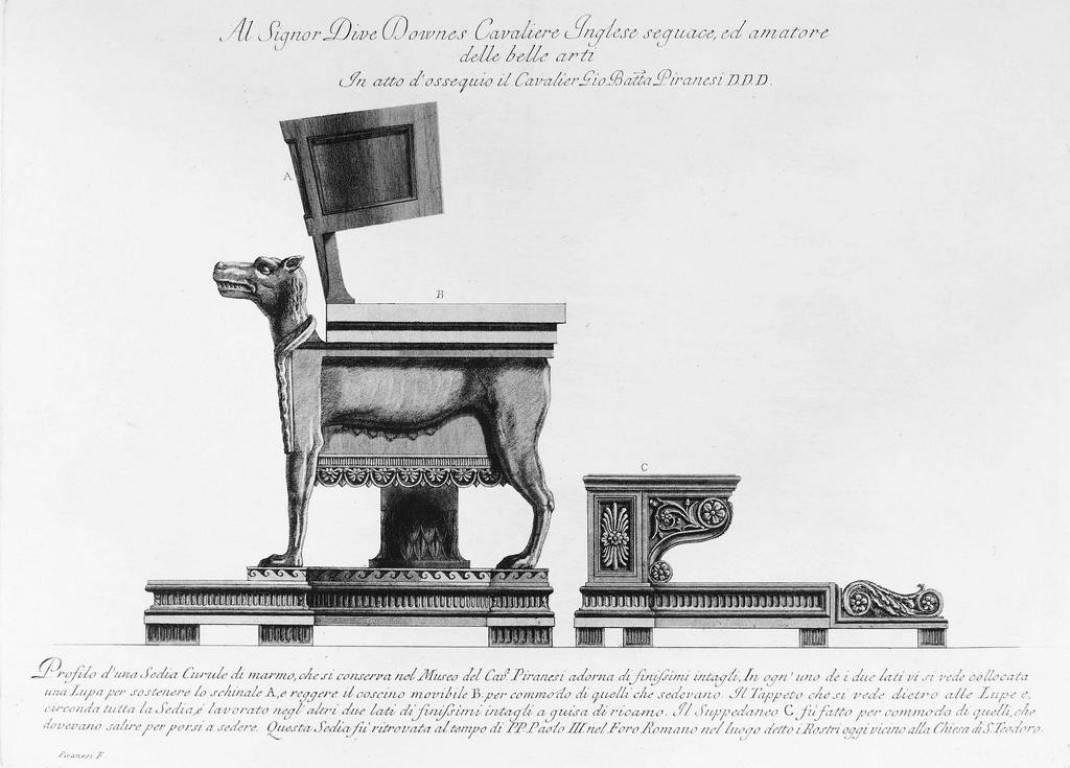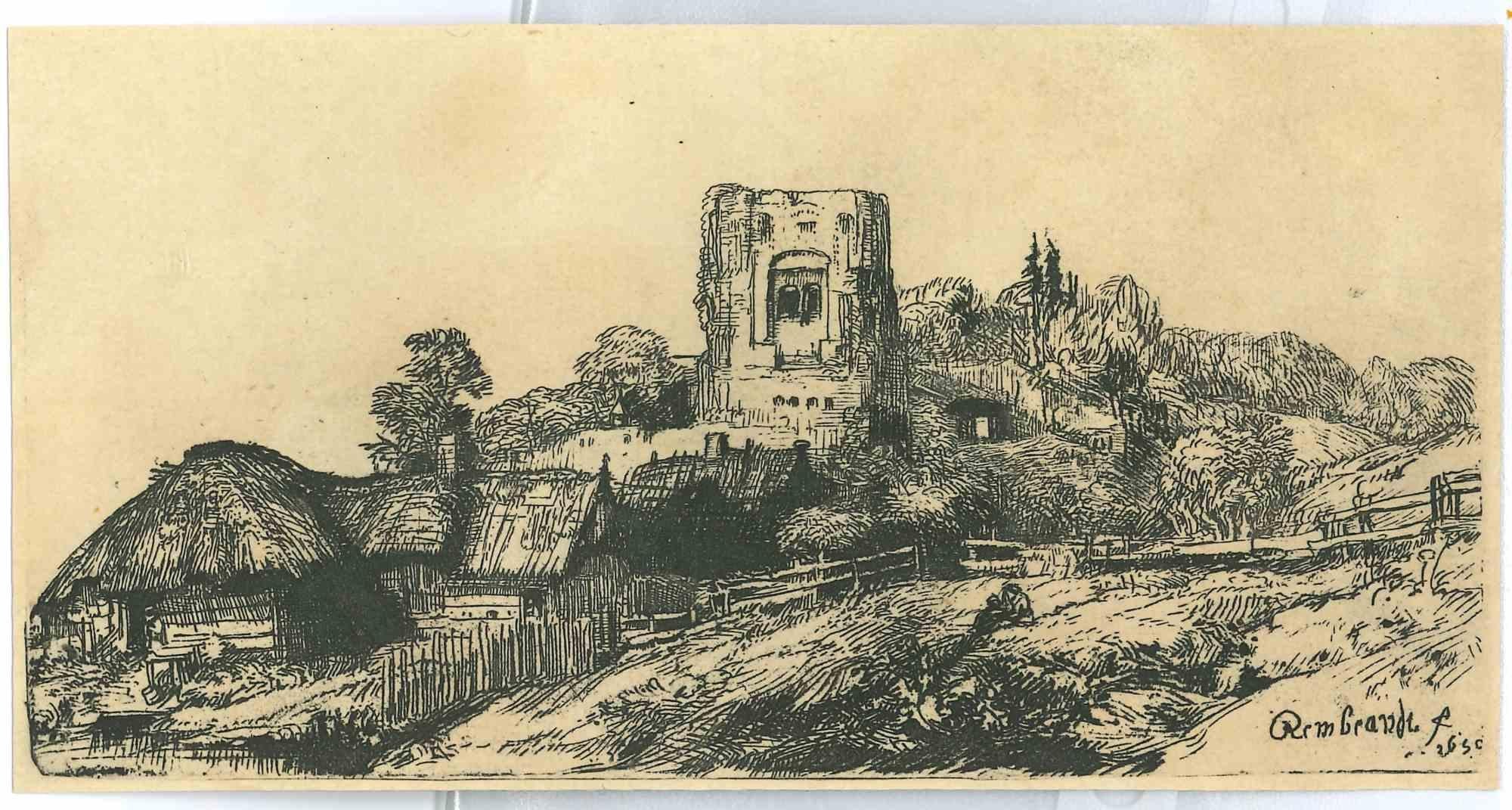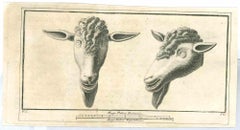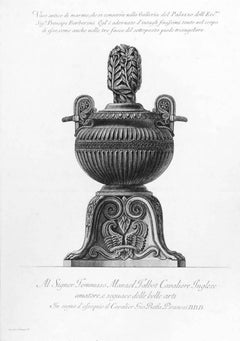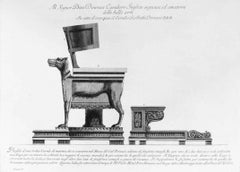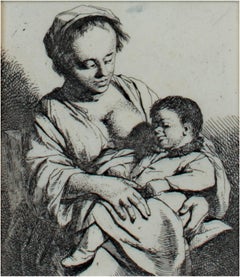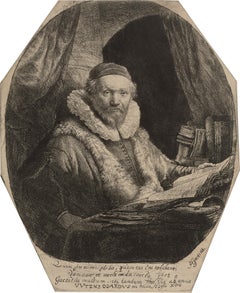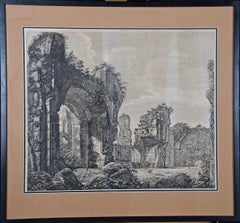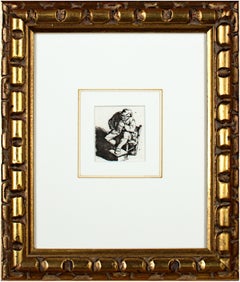Items Similar to Letter of the Alphabet C - Etching by Luigi Vanvitelli - 18th Century
Want more images or videos?
Request additional images or videos from the seller
1 of 2
Luigi VanvitelliLetter of the Alphabet C - Etching by Luigi Vanvitelli - 18th CenturyLate 18th Century
Late 18th Century
About the Item
Letter of the Alphabet C, from the series "Antiquities of Herculaneum", is an etching on paper realized by Luigi Vanvitelli in the 18th century.
Good conditions.
The etching belongs to the print suite “Antiquities of Herculaneum Exposed” (original title: “Le Antichità di Ercolano Esposte”), an eight-volume volume of engravings of the finds from the excavation of the ruins of Herculaneum in the Kingdom of Naples (now Campania, Italy). It was published between 1757 and 1792 by the Regia Stamperia, and copies were delivered to selected recipients across Europe.
Despite the title, the Antiquity of Herculaneum shows objects from all the excavations undertaken by the Bourbons in the Gulf of Naples. These include Pompeii, Stabia and two sites of Herculaneum: Resina and Portici.
The Bourbon King Carlo appointed fifteen scholars creating a new “Herculaneum Academy” to study the artifacts and publish the results of the archaeological excavations of the sites.
- Creator:Luigi Vanvitelli
- Creation Year:Late 18th Century
- Dimensions:Height: 2.96 in (7.5 cm)Width: 2.96 in (7.5 cm)Depth: 0.08 in (2 mm)
- Medium:
- Movement & Style:
- Period:
- Framing:Framing Options Available
- Condition:Insurance may be requested by customers as additional service, contact us for more information.
- Gallery Location:Roma, IT
- Reference Number:Seller: T-1359171stDibs: LU650311337322
About the Seller
4.9
Platinum Seller
Premium sellers with a 4.7+ rating and 24-hour response times
1stDibs seller since 2017
7,496 sales on 1stDibs
Typical response time: 2 hours
- ShippingRetrieving quote...Shipping from: Monaco, Monaco
- Return Policy
Authenticity Guarantee
In the unlikely event there’s an issue with an item’s authenticity, contact us within 1 year for a full refund. DetailsMoney-Back Guarantee
If your item is not as described, is damaged in transit, or does not arrive, contact us within 7 days for a full refund. Details24-Hour Cancellation
You have a 24-hour grace period in which to reconsider your purchase, with no questions asked.Vetted Professional Sellers
Our world-class sellers must adhere to strict standards for service and quality, maintaining the integrity of our listings.Price-Match Guarantee
If you find that a seller listed the same item for a lower price elsewhere, we’ll match it.Trusted Global Delivery
Our best-in-class carrier network provides specialized shipping options worldwide, including custom delivery.More From This Seller
View AllAncient Roman Statues of Sheep - Original Etching - 18th Century
Located in Roma, IT
Ancient Roman Statues of Sheep, from the series "Antiquities of Herculaneum", is an original etching on paper realized by Anonymous Artist in the 18th century.
Monogrammed on the pl...
Category
18th Century Old Masters Figurative Prints
Materials
Etching
Casino della Villa Patrizi Fuori - Etching by Giuseppe Vasi - Late 18th Century
By Giuseppe Vasi
Located in Roma, IT
Casino della Villa Patrizi Fuori di Via Pia is an original black and white etching of the Late 18th century realized by Giuseppe Vasi.
Signed and titled on plate lower margin.
Goo...
Category
Late 18th Century Old Masters Figurative Prints
Materials
Etching
Vaso antico di marmo, che si conosceva nella Galleria del Palazzo
By Giovanni Battista Piranesi
Located in Roma, IT
Artist's proof, printed on antique laid paper, large margins, representing an “antique marble vase in the gallery of the palazzo Barberini” as he r...
Category
1770s Old Masters Figurative Prints
Materials
Etching
Profilo d'una Sedia Curule di Marmo
By Giovanni Battista Piranesi
Located in Roma, IT
Etching of the serie “Vases, candelabras, gravestones, sarcophagi, tripods, lamps, and ornaments”, made and etched by Piranesi, published in the year 1778 by his son Francesco. Very fine etching, “Profile of the curial chair...
Category
1770s Old Masters Figurative Prints
Materials
Etching
Landschap Met Vierkante Toren - Engraving after Rembrandt - 19th Century
By Charles Amand Durand
Located in Roma, IT
Landschap Met Vierkante Toren is an engraving on ivory-colored paper realized by Charles Amand Durand after an etching by Rembrandt dated 1650. This wonderful piece of art belongs to...
Category
19th Century Old Masters Figurative Prints
Materials
Etching
Antiche urne cinerarie e lampade
By Giovanni Battista Piranesi
Located in Roma, IT
From the Piranesi's series “Vasi, candelabri, cippi, sarcofagi, tripodi, lucerne, ed ornamenti antichi disegnati ed incisi dal cav. Gio. Batt. Piranesi pubblicati l’anno MDCCLXXIIX” (1778). Antiche urne cinerarie e lampade" is an artist proof, printed on contemporary laid paper, large margins, representing antique marble cinerary urns - “found into antique graves...
Category
1770s Old Masters Figurative Prints
Materials
Etching
You May Also Like
17th century etching black and white mother and child figures scene
By Cornelis Bega
Located in Milwaukee, WI
"Mother & Child" is an original etching by Cornelis-Pietersz Bega. It depicts a mother and her child. Publisher: Pearce #51.
3" x 3" art
13 3/4" x 11 3/4" frame
Cornelis Pietersz B...
Category
Mid-17th Century Old Masters Figurative Prints
Materials
Etching
Jan Uytenbogaert, Preacher of the Remonstrants by Rembrandt van Rijn
By Rembrandt van Rijn
Located in New Orleans, LA
Rembrandt van Rijn
1606-1669 Dutch
Jan Uytenbogaert, Preacher of the Remonstrants
New Hollstein Dutch and Flemish (Rembrandt) 153, state 4/9
Bartsch 279, state 4/6
Printed by Remb...
Category
17th Century Old Masters Figurative Prints
Materials
Paper, Etching
19th Century Etching of the Ancient Caracalla Baths in Rome by Luigi Rossini
By Luigi Rossini
Located in Alamo, CA
This early 19th century etching entitled "Veduta dei Grandi Avanzi delle Terme Antoniane, o di Caracalla" (The baths of Caracalla) was created by Luigi Rossini and included in his pu...
Category
1820s Old Masters Figurative Prints
Materials
Etching
'The Smoker (Le Fumeur)' original etching by Cornelis-Pietersz Bega
By Cornelis Bega
Located in Milwaukee, WI
'The Smoker (Le Fumeur)' is an original etching by the celebrated Dutch painter and printmaker Cornelis-Pietersz Bega. It presents a genre scene of the type Bega was best known for: Bega's principal subjects were genre representations of taverns, domestic interiors and villages. He depicted nursing mothers, prostitutes, drunks, gamblers and fools such as quack doctors and alchemists. In this case, he shows a man seated on a chair with his foot on a flat stool and holding a smoking pipe. For Bega, this representation was more of a caricature than it was an image of a specific person, and such genre scenes would have held allegorical and symbolic meaning for the seventeenth-century viewer. During the seventeenth century, the Dutch of all levels of society consumed tobacco and alcohol, and these were an important part of the Dutch economy and a major source of wealth. At the same time, however, moralists and ministers sought to curb intoxication: they openly described drinking and smoking as sinful, immoral, and a general threat to one’s reputation. This paradox is reflected in prints such as this, which inherently carry the national pride of the Dutch economy alongside a moral warning in a print that could be just as easily consumed and collected.
2.5 x 2.25 inches, print
12.38 x 10.38 inches, frame
Framed to conservation standards using archival materials including 100 percent rag matting and mounting materials. Housed in a gold finish Spanish-style wood moulding.
Overall good and stable condition; margins cut to plate; some wrinkling in the corners from previous mounting; housed in a new custom frame.
Cornelis Bega was born into prosperous circumstances. His mother, Maria Cornelis, inherited half the estate (gold, silver, paintings, drawings and prints) and all of the red chalk drawings of her father, Cornelis Cornelisz van Haarlem, a renowned Mannerist artist. Bega's father was Pieter Jansz Begijn (d 1648), a gold and silversmith.
Like other family members, Bega was probably Catholic. Houbraken's claim that Bega studied with Adriaen van Ostade is likely to be correct; this was probably before 24 April 1653, when Bega joined Vincent Laurentsz. van der Vinne in Frankfurt for a journey through Germany, Switzerland and France. Bega had returned to Haarlem by 1 September 1654, at which time he joined the Guild of St Luke; he was already a competent draughtsman, as indicated by his first extant dated work, Interior with a Nursing Mother (1652; Frankfurt am Main, Städel. Kstinst.), and by a remarkable double portrait (Amsterdam, Rijksmuseum) drawn by him and Leendert van der Cooghen in 1654.
Bega painted, drew, etched and made counterproofs in a wide variety of materials on different types of small-scale supports. He may have been the first Dutch artist to make monotypes, but this remains controversial. Approximately 160 paintings, 80 drawings and six monotypes by Bega have been catalogued, as well as around 34 etchings.
Bega's principal subjects were genre representations of taverns, domestic interiors and villages. He depicted nursing mothers, prostitutes, drunks, smokers, gamblers and fools such as quack doctors and alchemists. Less common subjects include the ridiculed or pestered woman, as in Two Figures and Mother with a Spirits Bottle (c. 1662; Gouda, Stedel, Museum Catharina Gasthuis) and The Inn (etching), as well as witty satires on traditional scenes of middle-class music-makers, such as the Music Lesson (1663; Paris, Petit Palace).
Bega's early paintings, such as the Weaver's Family (c. 1652; St Petersburg, Hermitage), are freely executed, dark and coarse, recalling the many-figured peasant subjects of van Ostade. Between c. 1660 and 1664 he began to paint genre scenes with fewer figures, which are finely articulated, colourful and psychologically expressive, for example Two Men Singing (1662; Dublin, N.G.). His exquisite, late fijnschilderen ('fine painting') manner, evident in The Alchemist (1663; Malibu, Getty Museum), compares well with that of Gerrit Dou.
As a draughtsman Bega is noted for his single-figure studies, executed mainly in black and white chalk on blue paper or red chalk on white paper. None of the studies, which were drawn naer het leven (from life), seem to relate to a painting or etching. Bega traded drawings or shared models with other artists of the Haarlem school, including van der Cooghen, Gerrit Berckheyde, Dirck Helmbreker and Cornelis Visscher. These artists drew chalk figure studies in a very similar style, characterised by regular and precise parallel shading and well-defined forms; their drawings, especially those of Bega and Berckheyde, have been frequently confused. Unlike the realistic figure studies, Bega's etchings depict interiors with figures or single figures in the manner of van Ostade; the compositions, often with masterful chiaroscuro effects, reflect most closely the paintings of the 1650s.
Bega is likely to have remained in Haarlem, where he paid dues to the Guild in 1661. He probably died from the plague; fees for his expensive funeral at St. Bavo's were paid on 30 August 1664. Among the artists he influenced were Thomas Wijck, Jan Steen, Richard Brakenburg (1650-1702) and Cornelis Dusart. Painters such as R. Oostrzaen ( fl ?1656) and Jacob Toorenvliet...
Category
17th Century Old Masters Figurative Prints
Materials
Etching, Paper
Christ and the Woman of Samaria Among Ruins by James Bretherton after Rembrandt
By Rembrandt van Rijn
Located in Middletown, NY
Bretherton, James (After Rembrandt van Rijn).
Christ and the Woman of Samaria Among Ruins.
London: c 1775.
Etching on light cream laid paper, 4 3/4...
Category
18th Century Old Masters Figurative Prints
Materials
Handmade Paper, Etching, Laid Paper
The Quacksalver
By Adriaen van Ostade
Located in Middletown, NY
Etching on cream laid paper. 1/4 inch to 1/2 inch margins. In good condition with a band of minor discoloration along top and bottom sheet edge verso. One circular 1.5 inch- sized ar...
Category
Mid-17th Century Old Masters Figurative Prints
Materials
Laid Paper, Etching
Recently Viewed
View AllMore Ways To Browse
Piscines De Papier
Pool Of Tears Dali
Roamcouch Brooklyn Bridge
Robert Overman Hodgell
Rockwell Kent On Sale
Roger Medearis On Sale
Roy Fairchild Listen
Roy Lichtenstein Pistol
Roy Lichtenstein Sweet Dreams
Salomon Van Abbe
Saltimbanque Au Repos
Salvador Dali Cid
Salvador Dali El Cid
Salvador Dali Fallen Angel
Salvador Dali Le Baiser
Salvador Dali Signed Etching El Cid
Salvador Dali The Mystic Ladder
Samy Briss
